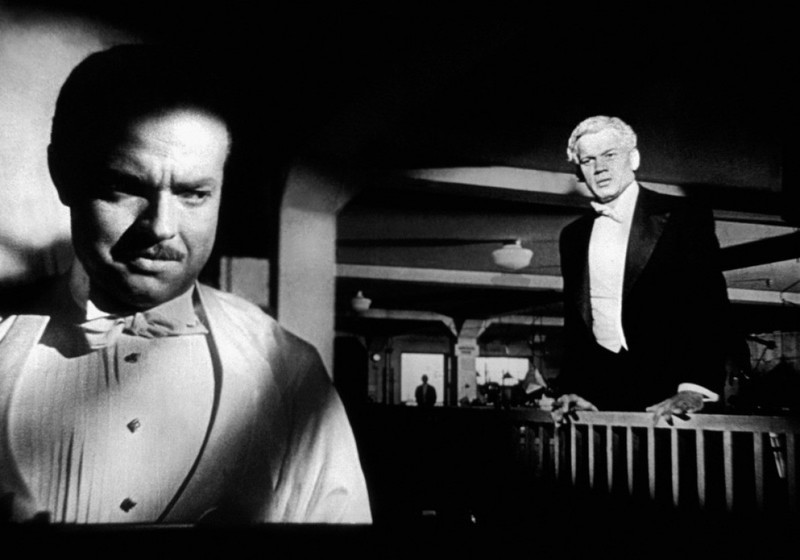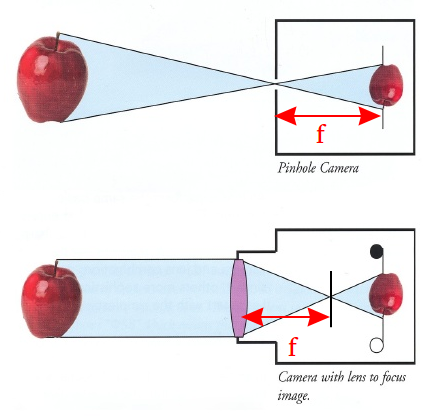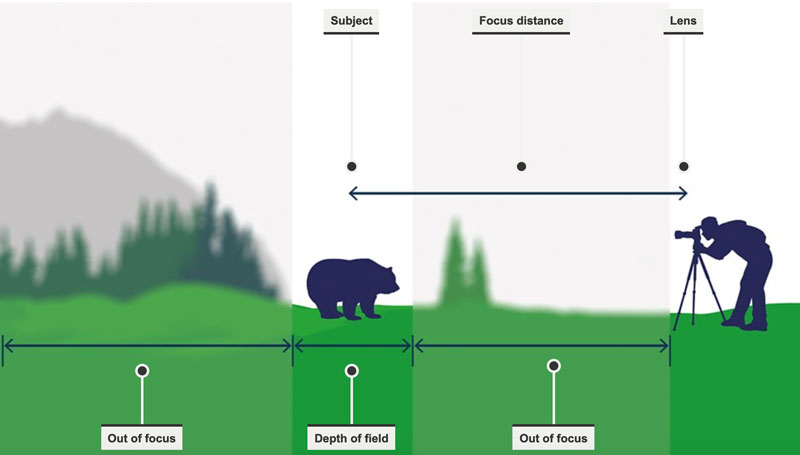Depth of Field – the Basics Explained
Understandably, what is or isn’t in focus in an image has a powerful effect on how how the viewer perceives the image. When we choose what to include within a frame, we are telling the viewer what to look at. While that is decided by camera angle and position, what is in focus within the image is another way of indicating what the viewer should… well… focus on.
Put simply, depth of field (DoF) is the distance between the nearest and the furthest objects that are in focus in an image.
The use of depth of field therefore gives you an extra tool (indeed, a tool within a tool) to direct the viewer’s attention towards the important elements within the frame.
Deep depth of field
If you have a very deep depth of field, everything in the image (or as much as physically possible) will be in focus.
One of the most famous cases of the use of deep depth of field was in the film Citizen Kane (1941). It took a considerable amount of technical skill, new equipment and innovation to achieve.
The result of a very deep depth of field is similar to an old master oil painting. With everything in focus, near and far, the composition within the frame becomes 100 times more important. But this in turn enables every frame to tell a number of stories within stories.
Look at this frame from Citizen Kane. Notice how the image encourages your eyes to bounce from the foreground to the back of the room. Charles Foster Kane’s eyes direct you to Jedediah Leland. As our eyes move in that direction they cross the central figure standing in the doorway, in the distance. This leads our eyes to keep moving all the way to the back of the room – encouraged at the same time by the angle of the roof beams, pillars, the hand railing and the lighting.

How many stories can you see in this image? How Charles and Jedediah feel about each other. The silhouetted figure at the back is mysterious, ominous and foreboding. Notice how the eyelines of the 2 characters probably cross somewhere around the figure at the back.
The thing about those old oil paintings is they are able to impact the viewer with the importance of the events taking place within the frame – just like the image above.

Rembrandt didn’t trouble himself with a shallow depth of field, even though he wouldn’t have needed a special lens to achieve it – he could have simply painted things more blurry if he thought they needed to be less focused on. Instead he uses light and lines within the image (eg the soldier’s spear) – including eyelines.
Shallow depth of field
In the last few decades, the ability to create a shallow depth of field in your still or moving images has become more and more desirable. Hence, recent smartphone features include “selective focus” – the camera’s AI draws a mask around the subject of the photo and puts everything outside the mask out of focus.
Shallow (or narrow) depth of field reduces the focus to the main object in the frame. Everything in front or behind is set out of focus. Note, this is how you create the popular Bokeh effect.

In this image the viewer’s attention is directed to the woman in the foreground. But what else does this style of photography do? What story does it tell the viewer?
Taking this as an example, while our focus is on the girl, the background becomes more of an “ambience”. As the details are reduced, the feeling we get from it are more vague and dreamlike. Therefore, in story terms, we are encouraging the viewer to dream.
The shallow depth of field creates a much more romantic image.
Remember, there are grades between deep and shallow depth of field. So we can choose exactly how much of this effect we wish to apply. So the more shallow the depth of field, the more the world we present to the viewer is romanticised.
But it doesn’t have to be used solely as a basic photography trick to “sex up” the image. It can also be used more thoughtfully and creatively.
What factors affect depth of field?
Depth of field is determined by a number of factors, including the size of the focal length, aperture and sensor (in digital photography or cinematography).
Focal Length
The longer the focal length of the lens, the more shallow the depth of field. So, telephoto lenses, for example, provide a shallow depth of field. However, they also have the effect of narrowing the field of vision. In a way, there’s a logic to this – the closer you get to your object the more focused you are on that object.
Focus distance
You can change your focus distance by moving your subject or moving your camera. As you move your camera further away from your subject, your focusing distance will increase and your depth of field will increase.
Aperture
The wider the aperture of the lens the more shallow the depth of field.
Ever tried making or using a pinhole camera? The camera obscura or “pinhole image” is a natural optical phenomenon. Light from the object goes through the pinhole and produces an inverted image in full colour on the screen. This is because only light from one point on the object can reach a given point on the screen.

The laws of physics dictate that, in general terms, the smaller the pinhole the sharper image. There will also be a reduction in the amount of light getting through the hole. So this phenomenon applies to the aperture of your lens. The smaller the aperture the deeper the depth of field (and less light will make it through to the camera sensor).
If you have the correct amount of light, therefore, you can use the aperture of the lens to reduce depth of field. Too much light and you will have to reduce the size of the aperture, deepening the depth of field.
Sensor size?
“The sensor size itself does not produce a shallower depth of field, but bigger sensors will force photographers to move closer to their subjects or to use longer lenses to produce similar fields of view of a smaller-sensor camera. Moving forward and increasing your focal length will both decrease depth of field.” Lee Morris
Read Next: the Mobile Motion Film Festival.
Eager to learn more?
Join our weekly newsletter featuring inspiring stories, no-budget filmmaking tips and comprehensive equipment reviews to help you turn your film projects into reality!
Simon Horrocks
Simon Horrocks is a screenwriter & filmmaker. His debut feature THIRD CONTACT was shot on a consumer camcorder and premiered at the BFI IMAX in 2013. His shot-on-smartphones sci-fi series SILENT EYE featured on Amazon Prime. He now runs a popular Patreon page which offers online courses for beginners, customised tips and more: www.patreon.com/SilentEye


